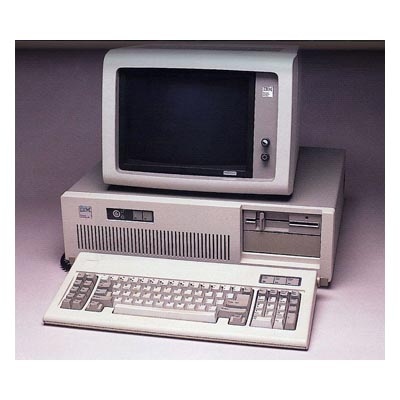Intel 80286 processors
Introduction: February 1982
The Intel 80286 (normally abbreviated as 286) processor did not suffer from the compatibility problems that damned the 80186 and 80188. The 286 chip, first introduced in 1982, is the CPU behind the original IBM AT. Other computer makers manufactured what came to be known as IBM clones, many of these manufacturers calling their systems AT-compatible or AT-class computers. When IBM developed the AT, it selected the 286 as the basis for the new system because the chip provided compatibility with the 8088 used in the PC and the XT. That means that software written for those chips should run on the 286. The 286 chip is many times faster than the 8088 used in the XT, and it offered a major performance boost to PCs used in businesses. The processing speed, or throughput, of the original AT (which ran at 6MHz) was five times greater than that of the PC running at 4.77MHz.
286 systems are faster than their predecessors for several reasons. The main reason is that 286 processors are much more efficient in executing instructions. An average instruction takes 12 clock cycles on the 8086 or 8088, but an average 4.5 cycles on the 286 processor. Additionally, the 286 chip can handle up to 16 bits of data at a time through an external data bus twice the size of the 8088.
The 286 chip has two modes of operation: real mode and protected mode. The two modes are distinct enough to make the 286 resemble two chips in one. In real mode, a 286 acts essentially the same as an 8086 chip and is fully object-code compatible with the 8086 and 8088 (a processor with object code compatibility can run programs written for another processor without modification and execute every system instruction in the same manner). In the protected mode of operation, the 286 was truly something new. In this mode, a program designed to take advantage of the chipís capabilities believes that it has access to 1GB of memory (including virtual memory). The 286 chip, however, can address only 16MB of hardware memory.
A significant failing of the 286 chip is that it cannot switch from protected mode to real mode without a hardware reset (a warm reboot) of the system (it can, however, switch from real mode to protected mode without a reset). A major improvement of the 386 over the 286 is that software can switch the 386 from real mode to protected mode, and vice versa. Only a small amount of software that took advantage of the 286 chip was sold until Windows 3.0 offered standard mode for 286 compatibility; by that time, the hottest-selling chip was the 386. Still, the 286 was Intelís first attempt to produce a CPU chip that supported multitasking, in which multiple programs run at the same time. The 286 was designed so that if one program locked up or failed, the entire system didnít need a warm boot (reset) or cold boot (power off, then back on). Theoretically, what happened in one area of memory didnít affect other programs. Before multitasked programs could be "safe" from one another, however, the 286 chip (and subsequent chips) needed an operating system that worked cooperatively with the chip to provide such protection.
Source: Upgrading and Repairing PCs (13th Edition) by Scott Mueller.




